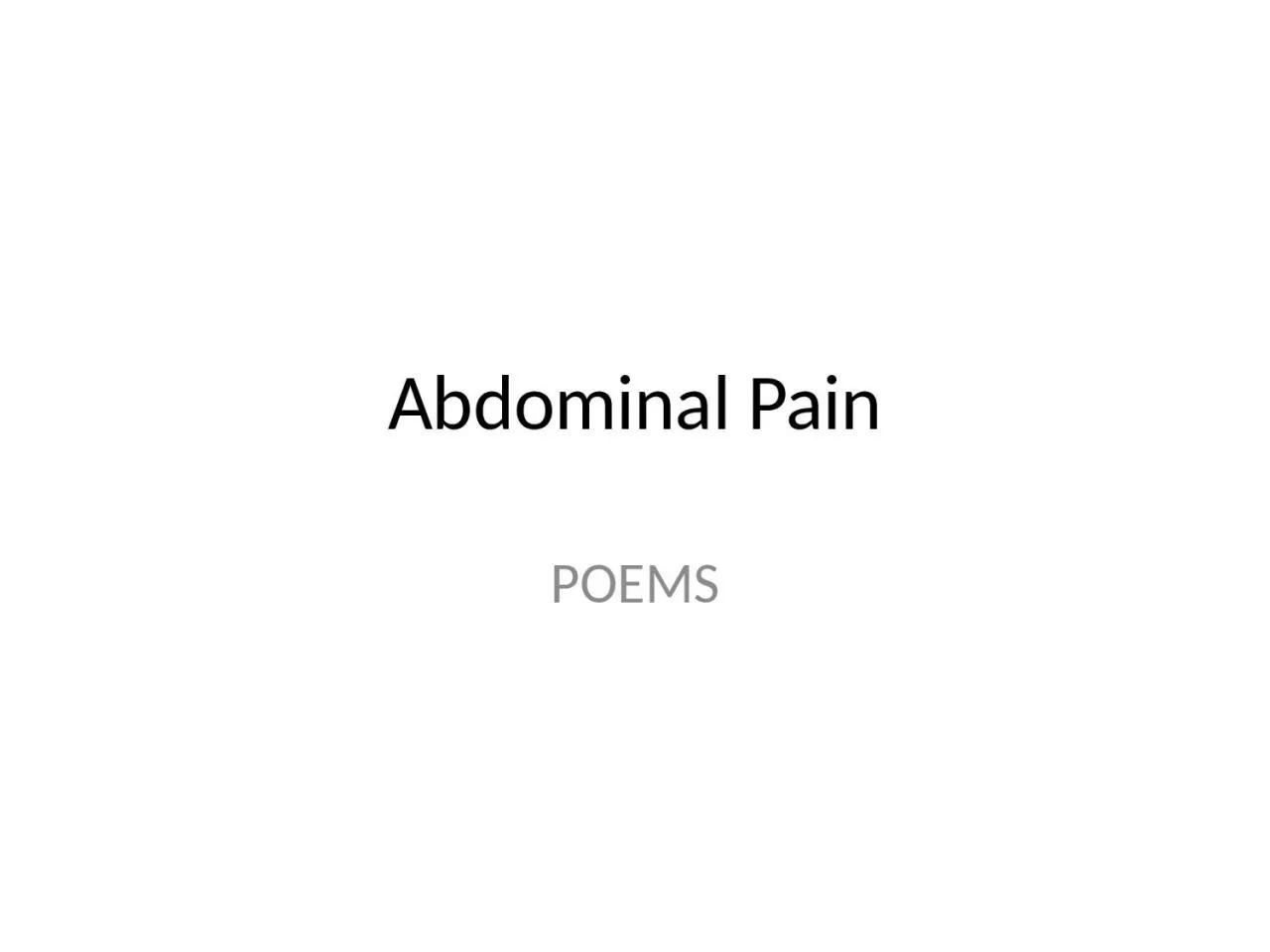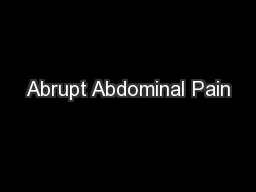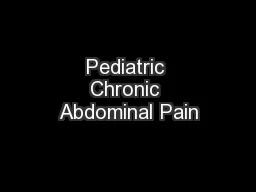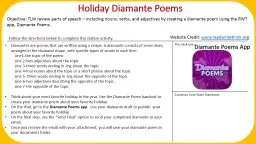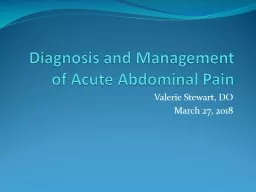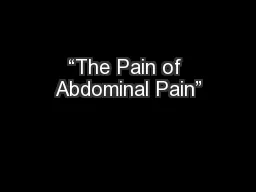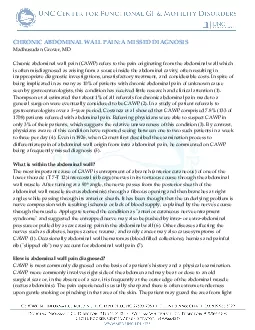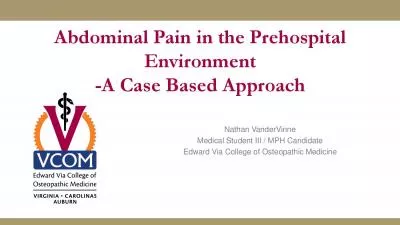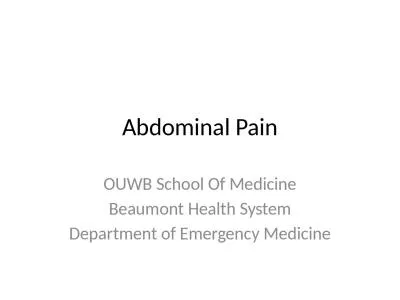PPT-Abdominal Pain POEMS Abdominal pain
Author : arya | Published Date : 2022-06-28
Common 4050 NSAP 30 Misdiagnosed Causes GI Urological OampG Vascular Causes Inflammation Obstruction Ischaemia Perforation Arterial Rupture Nonsurgical Appendicitis
Presentation Embed Code
Download Presentation
Download Presentation The PPT/PDF document "Abdominal Pain POEMS Abdominal pain" is the property of its rightful owner. Permission is granted to download and print the materials on this website for personal, non-commercial use only, and to display it on your personal computer provided you do not modify the materials and that you retain all copyright notices contained in the materials. By downloading content from our website, you accept the terms of this agreement.
Abdominal Pain POEMS Abdominal pain: Transcript
Download Rules Of Document
"Abdominal Pain POEMS Abdominal pain"The content belongs to its owner. You may download and print it for personal use, without modification, and keep all copyright notices. By downloading, you agree to these terms.
Related Documents

